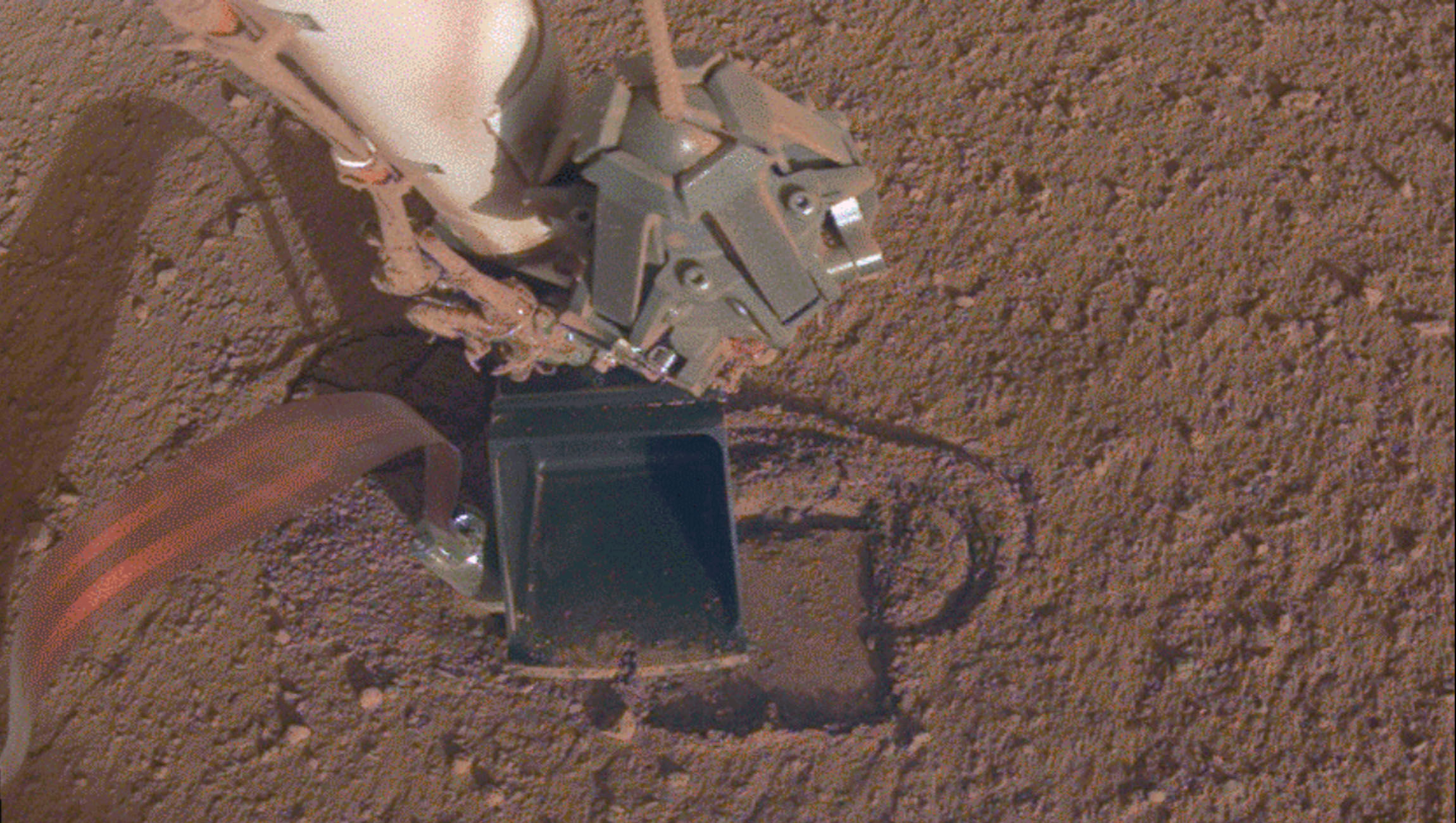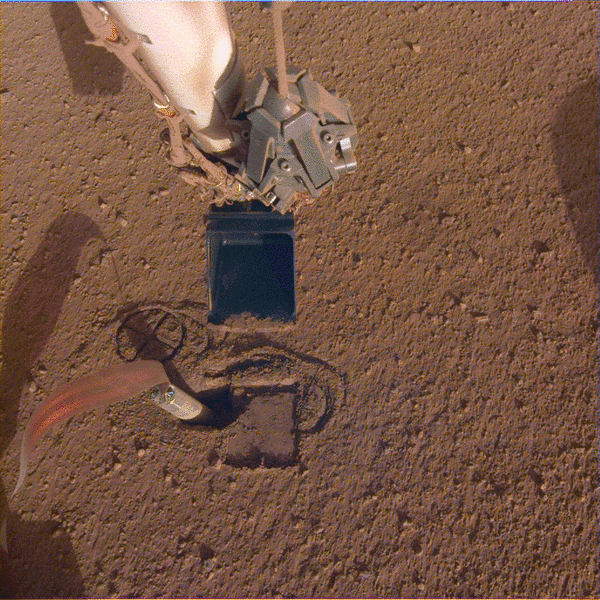Create a free profile to get unlimited access to exclusive videos, sweepstakes, and more!
InSight’s 'mole' is finally exploring the innards of Mars again

If Earthlings want to find out what the insides of Mars are like before we explore the Red Planet ourselves, we need to rely on a rover to do the exploratory surgery for us with a probe. The problem is that probe was stuck for a while — until it finally started moving again.
The robotic arm on NASA’s InSight rover is designed to push its heat probe aka “the mole” down into the Martian soil. Unfortunately, it was stuck for a while but has recently gotten unstuck after the space agency figured out how to rev it up again. It was a creative and unexpected use of the robotic arm that NASA and the German Aerospace Center (DLR) which pushed it to dig. This is kind of a big deal because the mole is supposed to dig up to 16 feet beneath the surface to discern how much heat is escaping from the planet’s guts.
"The mole still has a way to go, but we're all thrilled to see it digging again," said engineer and scientist Troy Hudson of NASA’s JPL (Jet Propulsion Laboratory), who has led the mole recovery effort. "When we first encountered this problem, it was crushing. But I thought, 'Maybe there's a chance; let's keep pressing on.'”
So here’s some InSight 101, an overview on what was happening with the rover and its mole up until now. The mole is part of the rover’s HP3, or Heat Flow and Physical Properties Package. Both the arm and the mole were tested on Earth (not that testing on terrestrial soil ever fully prepares any spacecraft for what it might find on an alien planet).
Earth tests did give NASA some insight on what to do with InSight and what they almost thought was a doomed heat probe. Earth testing actually accomplished something in this case.
InSight’s mole gets around with self-hammering motions. It can’t go anywhere without friction from the soil it’s trying to dig through. Tests conducted on terra firma proved that the mole was being held back by soil that was much stronger than anyone over here could have predicted. Without any friction from the soil, the mole recoils from its self-hammering motions and pretty much dances around in place. The robotic arm needed to be manipulated so it could press its attached scoop against the mole in a technique called “pinning”.
Using the pinning technique worked up enough friction for the mole to resume digging. It not only proved that there was no impenetratble layer of rock in the way, but that the mole which landed with InSight, like instruments from Spirit and Opportunity before it, could be saved with some brainstorming, could be salvaged.
"Seeing the mole's progress seems to indicate that there's no rock blocking our path," HP3 Principal Investigator Tilman Spohn of DLR said. "That's great news! We're rooting for our mole to keep going."
(via NASA)



























